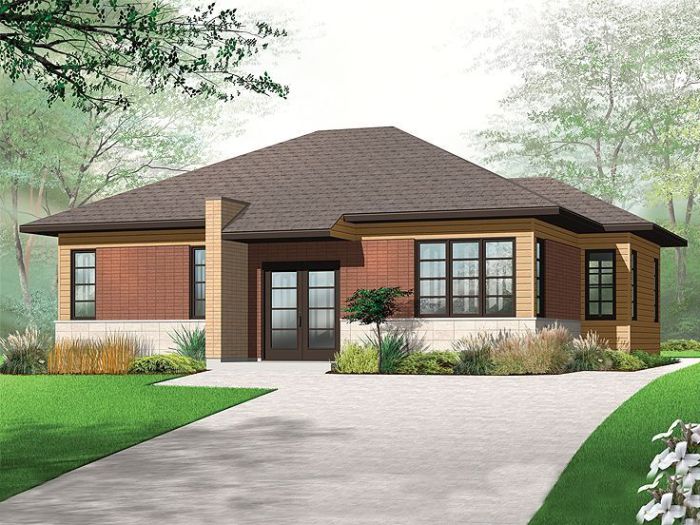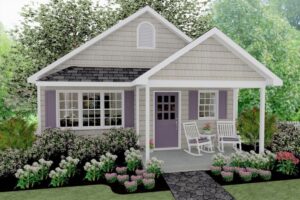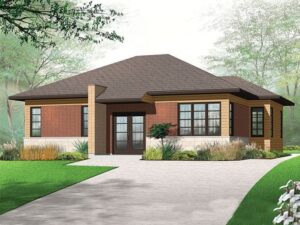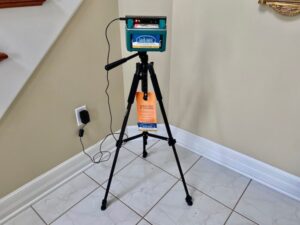
Affordable house plans for first-time buyers are essential in today’s housing market, where many individuals and families are navigating the complexities of homeownership for the first time. Selecting the right plan can mean the difference between a dream home and a financial burden, so understanding your options is crucial.
This guide will explore the importance of these affordable plans, highlight popular budget-friendly options, and discuss key features to consider, ensuring that new homeowners are well-prepared to make informed decisions as they embark on this exciting journey.
Affordable House Plans for First-Time Buyers
Selecting affordable house plans is crucial for first-time buyers as it directly impacts their financial stability and long-term investment. Many first-time buyers are entering the housing market with limited budgets and need to ensure that their homes not only meet their immediate needs but also provide value for years to come. By choosing budget-friendly plans, buyers can avoid overwhelming mortgage payments, which can lead to financial strain down the road.
Popular Budget-Friendly House Plans
There are several affordable house plans that cater specifically to the needs of first-time buyers. These plans are designed to maximize space and minimize costs while still maintaining comfort and functionality. A few examples include:
- The Cottage Style: Typically ranging from 800 to 1,200 square feet, these cozy homes often feature open floor plans, large windows, and efficient layouts, making them perfect for smaller families or couples.
- The Ranch House: A single-story design that can be easily customized, ranch houses generally have a simple layout that enhances accessibility and comfort, with sizes between 1,000 and 1,500 square feet.
- The Split-Level Home: Ideal for homeowners looking for additional space without increasing their budget significantly, split-level designs provide multi-level living with smart use of square footage.
When considering these plans, it’s essential to ensure they align with the buyer’s lifestyle and future plans.
Key Features in Affordable House Plans
When exploring affordable house plans, certain key features should be taken into account to ensure the home meets both current and future needs. These features not only enhance livability but also contribute to cost-effectiveness over time.
- Efficient Layout: An open floor plan can create a sense of spaciousness and allow for effective use of space, making smaller homes feel larger.
- Sustainable Materials: Utilizing eco-friendly materials can reduce long-term maintenance costs and promote energy efficiency, which is an essential consideration for budget-conscious buyers.
- Future Expansion Potential: Home plans that offer options for future additions can be a smart investment choice, allowing buyers to adapt their living space as their family grows.
- Energy Efficiency: Energy-efficient designs not only lower utility costs but also improve comfort, making it easier for first-time buyers to manage their budgets.
“Selecting a house plan with a focus on affordability today can lead to financial freedom tomorrow.”
Financing Options for First-Time Buyers
Financing a home can be an overwhelming process, especially for first-time buyers. Understanding the various financing options available is crucial for making informed decisions that suit your financial situation. With many programs designed specifically for new homeowners, finding the right path can pave the way to achieving your homeownership dreams.
Available Financing Options
Numerous financing options cater to first-time buyers, each with unique features and benefits. These options can significantly affect affordability and monthly payments. Below is a summary of some of the most common financing options:
- Conventional Loans: Typically require a higher credit score and down payment, often around 3-5%. They offer flexible terms and competitive interest rates.
- FHA Loans: Insured by the Federal Housing Administration, these loans are popular among first-time buyers due to their low down payment requirements of as little as 3.5% and more lenient credit score standards.
- VA Loans: Available for eligible veterans and active-duty service members, these loans require no down payment and come with favorable terms, including competitive interest rates and no private mortgage insurance (PMI).
- USDA Loans: Designed for rural and suburban homebuyers, these loans allow for no down payment and are aimed at those with low to moderate incomes. Eligibility is based on location and income limits.
Improving Mortgage Approval Chances
Securing mortgage approval can be challenging, but there are strategies that first-time buyers can adopt to enhance their chances. Solid preparation can make a significant difference in the approval process.
- Maintain a good credit score by paying bills on time and reducing debt-to-income ratios.
- Gather essential documents, such as pay stubs, tax returns, and bank statements, to provide lenders with a complete financial profile.
- Avoid major financial changes during the mortgage application process, such as switching jobs or making large purchases, which can affect creditworthiness.
- Consider getting pre-approved for a mortgage, as this shows sellers you are a serious buyer and can afford the home.
Down Payment Assistance Programs
Various down payment assistance programs exist to help first-time buyers ease the financial burden of obtaining a mortgage. These programs offer grants, low-interest loans, or forgivable loans to assist with down payments and closing costs. Below is a comparison of some of the most notable programs:
| Program Name | Type | Assistance Amount | Eligibility Requirements |
|---|---|---|---|
| HomeReady Mortgage | Conventional Loan | 3% down payment assistance | Income limits based on area median income |
| Good Neighbor Next Door | Forgivable Loan | 50% off the list price | Eligible law enforcement, teachers, firefighters, and EMTs |
| State Housing Finance Agency Programs | Grant or Loan | Varies by state | First-time homebuyer status, income limits |
| National Homebuyers Fund | Grant | Up to 5% of the loan amount | First-time homebuyer status, qualifying income |
Utilizing down payment assistance programs can significantly reduce the upfront costs of homeownership, making it accessible for many first-time buyers.
Home Furniture Selection for New Homeowners

As a first-time homeowner, selecting the right furniture can be both exciting and overwhelming. Understanding which pieces are essential and how to prioritize your purchases based on your needs can make the process much smoother. It’s crucial to balance style, functionality, and budget while creating a welcoming space that reflects your personality.Start by identifying essential furniture pieces that are indispensable for a comfortable living environment.
These items will form the foundation of your home’s aesthetic and functionality. Prioritizing your purchases based on immediate needs will help you allocate your budget wisely and avoid unnecessary expenses.
Essential Furniture Pieces for Budget-Conscious Buyers
When furnishing your new home, certain pieces stand out as essential for creating a functional and comfortable living space. Here are the must-have furniture items for first-time buyers:
- Bed Frame and Mattress: A quality bed frame and mattress are fundamental for a good night’s sleep. Look for options that provide comfort without breaking the bank.
- Sofa or Couch: A comfortable seating area is crucial for relaxation and entertaining guests. Consider budget-friendly upholstered options or even second-hand pieces that can be refurbished.
- Dining Table and Chairs: This is where you’ll enjoy meals and potentially work from home. Choose a durable table that suits your space and lifestyle.
- Storage Solutions: Bookshelves, cabinets, or storage bins help keep your space organized. Prioritize multi-functional furniture like ottomans with storage capabilities.
- Coffee Table: A coffee table can serve as a centerpiece for your living area, providing a place for drinks, books, and decor.
Prioritizing Furniture Purchases Based on Needs
Understanding your immediate needs versus what can wait is essential when furnishing your home. Focus on items that will enhance your daily life first, and consider the following factors to help prioritize your purchases:
- Daily Use: Identify the furniture you will use most frequently and invest in those pieces first. For example, prioritize your bed and sofa over decorative items.
- Space Constraints: Measure your rooms and consider the scale of your furniture. Opt for pieces that fit comfortably in your space without overcrowding.
- Functionality: Choose items that serve multiple purposes. For instance, a dining table can double as a workspace.
- Aesthetics: While functionality is key, consider how each piece contributes to the overall aesthetic of your home. Choose a cohesive style that reflects your personality.
- Future Needs: Anticipate needs that may arise in the future, such as additional seating for gatherings, and plan accordingly.
Finding Affordable Furniture Options
Budgeting for furniture doesn’t mean compromising on quality or style. There are numerous ways to find affordable options that fit your needs:
- Second-Hand Stores: Thrift shops and consignment stores often have unique furniture pieces at a fraction of the retail price. Don’t shy away from refinishing or reupholstering.
- Online Marketplaces: Websites and apps like Craigslist, Facebook Marketplace, and OfferUp can yield excellent deals on gently used furniture.
- Sales and Discounts: Keep an eye out for seasonal sales, clearance events, and coupons from retailers. Signing up for newsletters can provide exclusive discounts.
- DIY Projects: Consider building your own furniture or upcycling older pieces to meet your style and function needs. There are countless online tutorials to guide you.
- Flat-Pack Furniture: Retailers like IKEA offer stylish and functional furniture at lower prices, making them a popular choice for first-time buyers.
Green Living in Affordable Homes
Incorporating green living practices into affordable homes not only promotes environmental sustainability but also enhances the quality of life for homeowners. By embracing eco-friendly options, first-time buyers can create a living space that is cost-effective in the long run while contributing positively to the planet.Green living practices offer numerous benefits, including reduced energy costs, improved indoor air quality, and a smaller carbon footprint.
By focusing on eco-friendly materials and energy-efficient appliances, homeowners can significantly lower their utility bills and minimize waste. Additionally, many green building practices have become more accessible, making them an attractive option for those looking to establish their first home without breaking the bank.
Choosing Eco-Friendly Materials and Appliances
Selecting eco-friendly materials and appliances is crucial for creating a sustainable home. Here are some methods to consider when making these choices:
1. Opt for Sustainable Materials
Choose materials that are sourced sustainably, such as bamboo flooring, reclaimed wood for furniture, and recycled metal for fixtures. These options not only reduce the demand for virgin materials but also offer unique aesthetics to the home.
2. Energy-Efficient Appliances
When selecting appliances, look for Energy Star-rated products. These appliances meet strict energy efficiency guidelines, helping to reduce electricity consumption and lower bills.
3. Low VOC Paints and Finishes
Use paints and finishes that are labeled as low in volatile organic compounds (VOCs). These products contribute to better indoor air quality and reduce harmful emissions.
4. Natural Insulation Materials
Consider insulation made from recycled materials or natural fibers like sheep’s wool or cotton. These materials are effective and have a lower environmental impact.
Energy-Efficient Home Improvements
Making energy-efficient improvements in an affordable home can greatly enhance comfort and reduce costs. Here are some practical tips:
Install LED Lighting
Replace incandescent bulbs with LED lights. LED lighting uses up to 80% less energy and lasts significantly longer, resulting in lower electricity bills.
Upgrade Windows
Consider double or triple-glazed windows to improve insulation. This can help keep homes warmer in winter and cooler in summer, reducing reliance on heating and cooling systems.
Use Programmable Thermostats
Install programmable thermostats to control heating and cooling more efficiently. This allows homeowners to reduce energy consumption when they are not home.
Implement Solar Panels
If budget allows, consider installing solar panels. Although the initial investment can be high, many states offer incentives, and the long-term savings on energy bills can be substantial.By incorporating these eco-friendly choices and energy-efficient upgrades, first-time buyers can enjoy the benefits of green living while maintaining affordability in their new homes.
Heating and Air Conditioning Tips
In affordable homes, an efficient heating, ventilation, and air conditioning (HVAC) system is crucial for maintaining comfort throughout the year. The right HVAC system not only enhances indoor air quality but also contributes significantly to energy efficiency, which can lead to substantial savings on utility bills. Understanding how to select and maintain these systems is essential for first-time homeowners to ensure their investment stands the test of time.Selecting the right heating and cooling systems is vital for optimizing comfort and energy use in your new home.
Factors such as the size of the space, local climate, and energy efficiency ratings should guide your decision-making. Here are some key considerations when choosing an HVAC system:
Choosing the Right HVAC System
Selecting an appropriate HVAC system requires careful consideration of several factors. Doing so can enhance energy efficiency and reduce costs over time.
- Size of the System: An HVAC system must be correctly sized for your home. An undersized system will struggle to maintain comfort, while an oversized system will cycle on and off too frequently, which can lead to higher energy costs.
- Energy Efficiency Ratings: Look for systems with high Seasonal Energy Efficiency Ratios (SEER) and Annual Fuel Utilization Efficiency (AFUE) ratings. These ratings indicate how efficiently the systems convert energy into heating or cooling.
- Type of System: Consider different types of systems such as central air conditioning, ductless mini-splits, or heat pumps. Each has its pros and cons depending on your home’s layout and heating needs.
- Budget and Financing: Evaluate the initial cost versus long-term savings. Some energy-efficient models may have a higher upfront cost but can save you money over time through lower energy bills and possible rebates.
Maintaining your HVAC system is key to prolonging its lifespan and ensuring optimal performance. Regular maintenance can prevent costly repairs and inefficiencies that can arise from neglect. Here are practical maintenance tips:
Maintenance Tips for HVAC Systems
Routine maintenance is essential for keeping your heating and air conditioning systems running smoothly. Below are some effective practices you can adopt:
- Change Filters Regularly: Dirty filters can restrict airflow, making your system work harder, which can lead to breakdowns. Check and replace filters at least every three months.
- Keep Condenser Coils Clean: Ensure that the outdoor unit is free from debris like leaves and dirt. Regular cleaning of the coils can help maintain efficiency.
- Schedule Annual Inspections: Having a professional inspect your HVAC system once a year can identify potential issues before they become major problems.
- Use Programmable Thermostats: Installing a programmable thermostat allows you to set temperature schedules that align with your lifestyle, optimizing energy use.
To sum up, an efficient HVAC system is a critical component of an affordable home. The right selection and consistent maintenance can create a comfortable living environment while keeping energy costs manageable.
Importance of Home Inspections

Home inspections play a critical role in the journey of first-time homebuyers, serving as a safeguard against unforeseen issues and costly repairs. By understanding the condition of a property before finalizing the purchase, homeowners can confidently make informed decisions and negotiate better terms. This process not only helps buyers avoid potential pitfalls but also ensures that they invest in a home that meets their needs and expectations.During a home inspection, a professional inspector evaluates various aspects of the property, identifying any defects or maintenance requirements.
This assessment is crucial, as it covers everything from structural integrity to safety concerns. Common issues that may arise during an inspection include plumbing leaks, electrical hazards, and roof damage. By being aware of these potential problems, first-time buyers can prioritize repairs or negotiate with sellers before moving forward.
Common Issues Found in Home Inspections
It’s essential for buyers to be aware of typical issues that home inspectors look for. Addressing these concerns early on can save significant time and money. Here are some common problems to consider:
- Roofing Issues: Look for missing shingles, water damage, or signs of wear that might lead to leaks.
- Foundation Problems: Check for cracks, uneven surfaces, or signs of settling, which can indicate serious structural concerns.
- Electrical System: Inspect wiring, outlets, and circuit breakers to ensure they meet safety standards and are up to code.
- Plumbing Leaks: Identify any leaky pipes, faucets, or drains that could lead to water damage and mold growth.
- HVAC Systems: Evaluate heating and cooling units for functionality, age, and maintenance history.
Must-Have Inspections for New Buyers
Having a comprehensive inspection plan is essential for first-time buyers. Here’s a checklist of must-have inspections to ensure the property is safe and sound:
- General Home Inspection: A thorough assessment of the entire home, including structural components and systems.
- Pest Inspection: Identify any infestations, particularly for wood-destroying insects like termites.
- Radon Testing: Measure radon levels, especially in areas where it is more common, as high levels can pose health risks.
- Mold Inspection: Check for mold presence, particularly in damp areas like basements and bathrooms.
- Septic System Inspection: For homes with septic systems, ensure they are functioning correctly and meet local regulations.
By taking these steps, new homeowners can enhance their understanding of the property and make better-informed decisions. A thorough inspection process not only provides peace of mind but also lays the groundwork for a successful homeownership experience.
Designing a Functional Layout
Creating a functional layout is essential for maximizing space in smaller homes, especially for first-time buyers who may be working with limited square footage. An effective layout not only enhances the flow of the home but also ensures that every square inch is utilized efficiently. This is particularly important for new homeowners who want to create a comfortable living environment without the burden of extensive renovations.When designing a functional layout, the goal is to make the most of the available space while ensuring that each room serves its intended purpose effectively.
Here are some important tips for organizing rooms within house plans to achieve a seamless and practical design.
Maximizing Space with Smart Design Choices
To create a functional layout that optimizes space in smaller homes, consider the following strategies:
Open Floor Plans
Incorporating an open floor plan can make a small home feel larger by eliminating unnecessary walls. This design allows for better visibility and flow between living, dining, and kitchen areas, creating a more inviting atmosphere.
Multi-Purpose Rooms
Designate rooms for multiple uses. For example, a guest room can double as a home office by utilizing a murphy bed or a sleeper sofa. This flexibility enhances the home’s functionality without requiring additional square footage.
Built-In Storage Solutions
Utilize built-in shelves, cabinets, and closets to maximize vertical space. These solutions help keep the home organized while minimizing clutter. Using furniture with hidden storage, like ottomans or coffee tables with compartments, also adds to the efficiency of space.
Functional Furniture Arrangement
Position furniture to encourage movement and social interaction. For instance, placing sofas and chairs in a U-shape can create a cozy conversation area, while ensuring there’s enough space for people to walk around comfortably.
Zoning Areas
Use rugs or different paint colors to define spaces within an open layout. This can help establish distinct areas for dining, relaxation, or work, making the home feel cohesive and well-organized.
Natural Light Utilization
Arrange windows and furniture to maximize natural light. Bright spaces tend to feel larger and more welcoming. Consider using sheer curtains or blinds that can be easily adjusted to allow sunlight in without compromising privacy.
Vertical Space Usage
Take advantage of ceilings and walls. Installing shelves high up for books and decor can free up floor space and draw the eye upward, adding to the illusion of height in smaller rooms.By applying these strategies, first-time buyers can develop a home layout that not only meets their needs but also enhances their living experience. Popular layout designs among first-time homeowners often include a combination of open living spaces and efficient room configurations that prioritize both functionality and comfort.
Tips for Transitioning to Homeownership
Transitioning to homeownership is an exciting journey, especially for first-time buyers. It brings a mix of emotions, responsibilities, and new experiences. However, preparing for this milestone can ease the transition and set you up for success in your new space. Essential tasks need to be completed before moving into your new home, ensuring everything goes smoothly. Proper planning can also help manage the often-overlooked costs associated with moving.
Finally, acknowledging the emotional aspects of this significant life change plays a crucial role in navigating the transition.
Essential Tasks Before Moving In
Before the big move, it’s critical to have a checklist of essential tasks to ensure a smooth transition. These tasks lay the groundwork for settling into your new home.
- Conduct a final walkthrough of the property to confirm that repairs have been made and no items were left behind by the previous owner.
- Set up utilities such as electricity, water, gas, internet, and trash collection in your name prior to moving in.
- Change the locks on all doors for security reasons, ensuring that only you have access to your new home.
- Deep clean the entire house to create a fresh start in your new space, including carpets, windows, and appliances.
- Organize and prioritize your moving supplies, ensuring you have boxes, packing tape, and labels ready for packing.
Strategies for Managing Moving Costs
Managing moving costs effectively can help you stay within your budget while ensuring a smooth transition to homeownership. Here are strategies to consider:
- Get multiple quotes from moving companies to find the best rate and services that fit your needs.
- Consider renting a moving truck and asking friends or family for help rather than hiring professional movers.
- Sell or donate items you no longer need before the move to reduce the number of belongings you need to transport.
- Plan your move during the off-peak season to take advantage of lower rates for moving services and rentals.
- Budget for unexpected expenses by setting aside a small portion of your savings for any last-minute costs that may arise.
Emotional Aspects of Homeownership Transition
Transitioning to homeownership can be emotionally taxing, as it represents a significant life change. Recognizing these feelings is important for a healthy adjustment.
- Acknowledge feelings of anxiety and stress that often accompany such a big purchase, and seek support from friends or family.
- Celebrate small milestones during the moving process to maintain a positive outlook, such as completing your first room or unpacking a special item.
- Establish a routine in your new home to create familiarity and comfort, which can help ease feelings of displacement.
- Engage with your new neighborhood by meeting neighbors or attending local events to foster a sense of community.
- Take time for self-care during the transition, whether that means enjoying a relaxing evening or indulging in a favorite hobby to help manage stress.
Last Word
In conclusion, choosing affordable house plans for first-time buyers not only facilitates a smooth transition into homeownership but also fosters long-term financial stability. By considering various financing options and essential home features, new buyers can confidently create a space that suits their needs without breaking the bank.
FAQ Insights
What are the advantages of affordable house plans?
They help first-time buyers manage their budgets effectively while providing essential features suited to their needs.
How can I find affordable house plans?
Look online, consult with real estate agents, or explore local homebuilders who specialize in budget-friendly designs.
Are there specific features I should prioritize in affordable house plans?
Focus on energy efficiency, functional layouts, and the potential for future upgrades to maximize your investment.
What financing options are available for first-time buyers?
Options include FHA loans, USDA loans, and various local down payment assistance programs that cater to different financial situations.
How can I make my new home more energy-efficient?
Consider using eco-friendly materials, installing energy-efficient appliances, and investing in proper insulation and HVAC systems.





